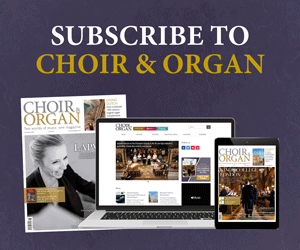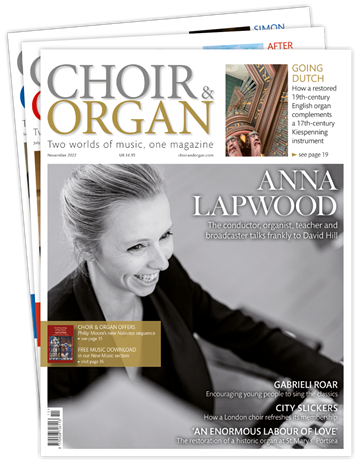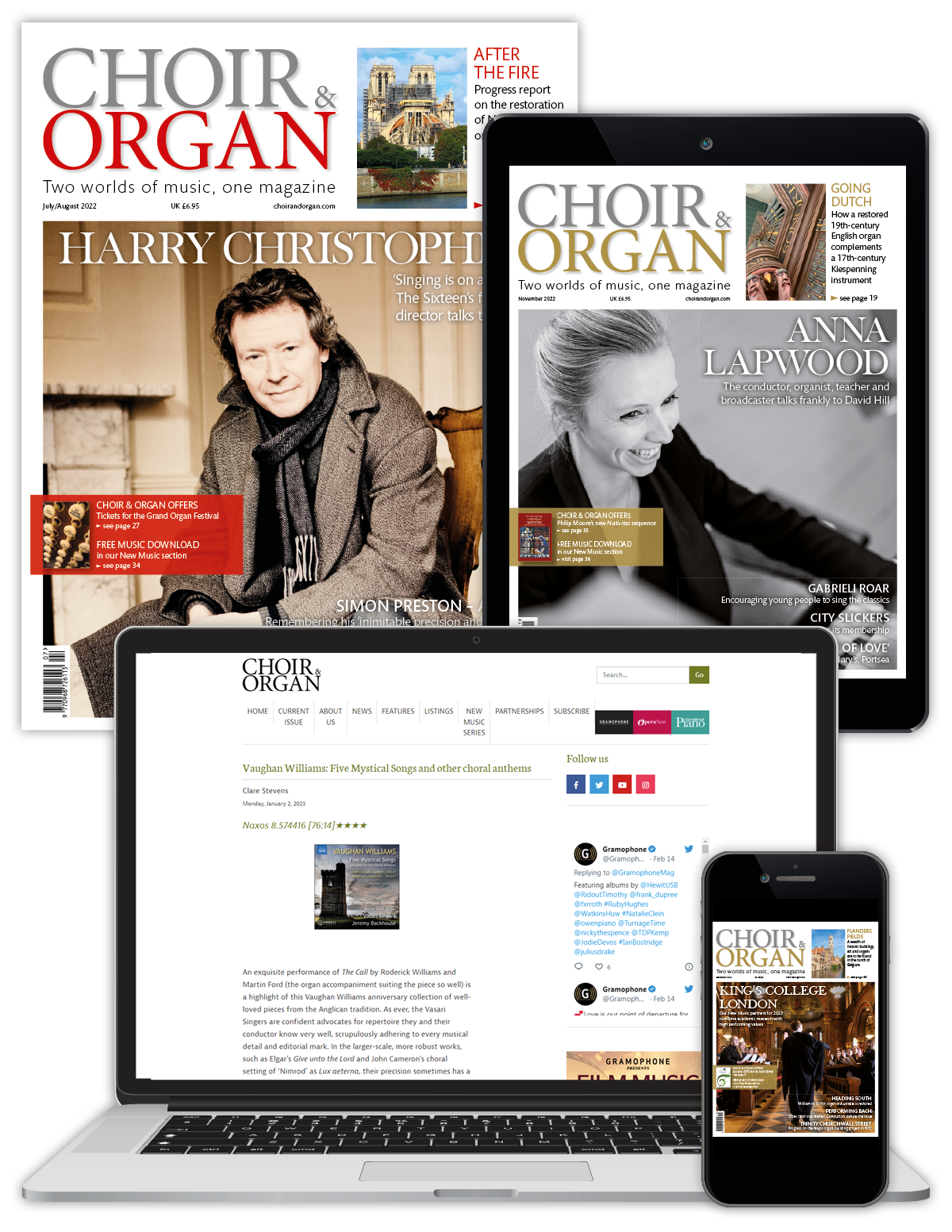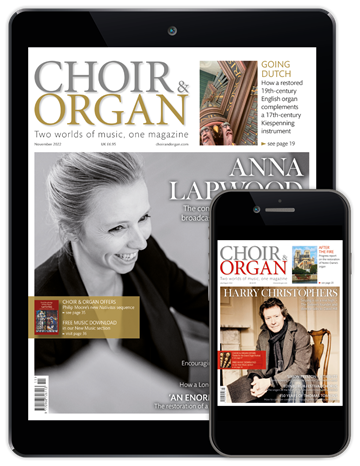Liverpool Metropolitan Cathedral organ
Tom Bell
Wednesday, February 21, 2024
A respectful restoration of the inspired Walker organ at Liverpool Metropolitan Cathedral has released its intended potential for the first time. Tom Bell takes us on a tonal tour
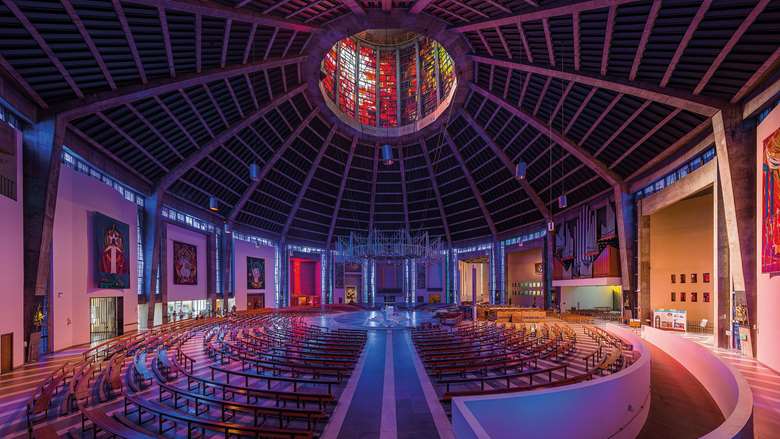
Let me take you back in time 50 years or so, to a period when organists and organ builders were utterly convinced that the ‘right’ sort of organ, the ‘correct’ sort of organ, was a classically-voiced instrument. Your Open Wood 32? Saw it up. Your well-appointed Solo or Orchestral division? Shove a Cymbal III on it. Without a doubt, ill-considered things were done to beautiful Romantic organs, in pursuit of a dogma. Fast forward to the 2020s and the tide has turned, as has the dogma. Having lamented the vandalism of Romantic instruments, without a thought we seem to have commenced doing precisely the same thing to the Classical organs of the 1950-80 period.
Is it not enriching to be challenged by an organ? Perhaps one that speaks a different artistic language from that which we might prefer or be accustomed to? Is this not a fact of life for organists? Too often, it seems, we prefer to ask our communities to find vast sums of money, apparently so that we don’t have to learn new repertoire or reconsider our approach to an instrument. This writer doesn’t understand it.
A number of excellent, challenging, and often still-controversial organs were built in the UK in the decades after London’s Royal Festival Hall instrument burst on to the scene in 1954 and distressed poor Ralph Vaughan Williams. Harrison & Harrison built that one and went on to build the organ at Coventry Cathedral, too. Hill, Norman & Beard gave us Gloucester Cathedral organ; J W Walker built striking instruments at Blackburn Cathedral, and two years earlier a larger instrument at Liverpool Metropolitan Cathedral. Walker voicer Dennis Thurlow’s style is unmistakable: lively, fresh and exciting still, after more than half a century.
It feels as though we are hearing the 1967 Walker in its full glory for the first time
Richard LeaWe must rejoice that the Liverpool organ has been respectfully and beautifully overhauled by Harrison & Harrison of Durham. To understand the recent project fully, it is worth returning to our time machine. Terry Duffy, cathedral organist (1963-93), and director of music (2004-07) – to whom I am indebted for much of what follows – described to me the architectural process by which the organ arrived at its 1967 form: ‘When the organ was planned in the 1960s, Walkers agreed to allow architect Frederick Gibberd to design the façade. While this is striking and befits the building, in organ-building terms it went against good practice. The original intention was that the choir would be sited in a raised gallery over the Blessed Sacrament chapel. The console would also be placed there with the organ divided into two and placed in the two apses either side of the chapel. That plan was quickly rejected.’ Instead, the organ was placed on the gallery above the Blessed Sacrament chapel, and the console (and choir) were placed at ground level, where they remain. The result was an organ shoehorned into a difficult space with a sharply inclined roof: the height and depth available within the chamber are a fraction of what they might appear to be from without. The internal layout of the organ ended up being, in the words of Duffy, ‘something of a cramped maze’. Access to the organ chamber was difficult, via an alarming vertical ladder from the car park deep beneath the cathedral. It was once scaled at astonishing speed by a tuner to correct a fault during a Papal visit but is now condemned as a health and safety risk. Today a scaffold must be used even to tune the organ. The ceiling of the aforesaid car park hosts the (mechanical) action for the swell shutters; at around 120ft, this is the greatest distance for such a mechanism, from console to swell box, in the UK if not the world. And it is as light as a feather.
Despite the problems described above, the organ has always had a magic to it. Its sound floats so elegantly in the cavernous acoustic, paradoxically crystal clear yet somehow diffuse at the same time. Recordings in recent decades by Richard Lea and Jeremy Filsell give the flavour of a distinctive organ worth savouring in a unique building. But my, it must be a nightmare to record it.
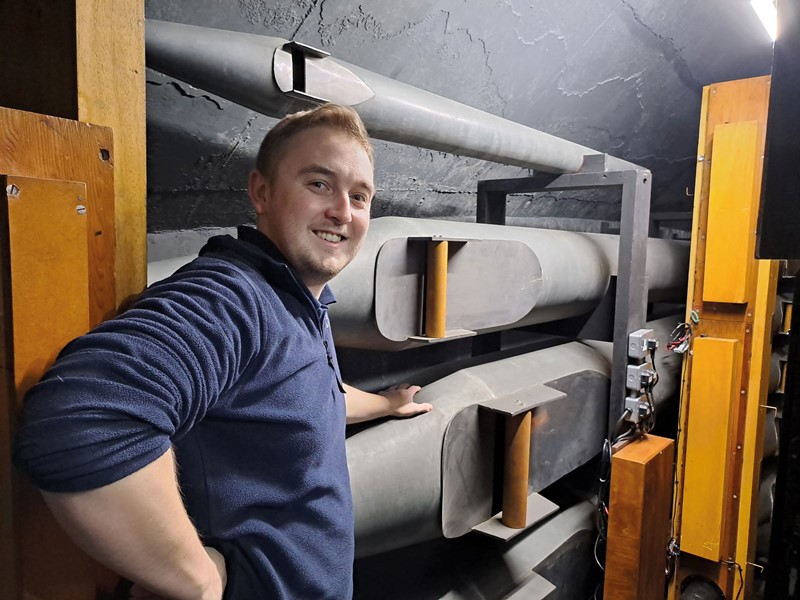
Voicer Andrew Fiddes with a section of the Pedal 32ft Contra Spitzflöte
The Pedal is supported by a tapered 32ft which is pungent and clear, the lowest two notes less so as they are Haskelled and lie across the back of the chamber. The Rohr Schalmei 4 is something of a calling card for this generation of organs. The Positive is incisive, as one might expect, and lives at the bottom of the organ towards the front. Its little pipes make a striking contrast with the Contra Spitzflöte 32, which seems to grow out of them like an over-large garden tree. The Krummhorn is narrower than the Solo Clarinet, though in power they match each other. The 8ft flute is the most penetrating of several such stops on the manuals: not unexpectedly the cornet décomposé is bigger and broader than the equivalent tierce combination on the Swell. A second 4ft flute (a Spitzflöte) was provided here in 1967, but curiously no principal rank at that pitch. Duffy reports that Walkers tried more than once to develop the contrast intended between the 4ft flute stops to no avail. Thus, Harrison & Harrison has provided an excellent new Prestant 4. The Spitzflöte has been retired to safe storage, leaving the gorgeous Koppelflöte to fly the flag for 4ft flute tone. On the Great, the Principal 8 provides the foundation of the chorus and is supported by the bigger, broader Open Diapason. These are joined by a colourful and stringy Gemshorn and a Stopped Diapason. The chorus from 16ft to Plein Jeu is rich and silvery, the reeds topping it with éclat. In 1967 baffles were fitted above the Great, with the intention of focusing the sound of the fluework in the room. Alas, they sat in front of the reeds, slightly muffling those stops without making much difference to the flues. The baffles have been removed, and the layout of the Great and Positive altered, to good effect. As Terry Duffy puts it, ‘The outcome of all of this is that the true potential of the Great – flues and reeds – has finally been released 57 years too late and the difference is remarkable’.
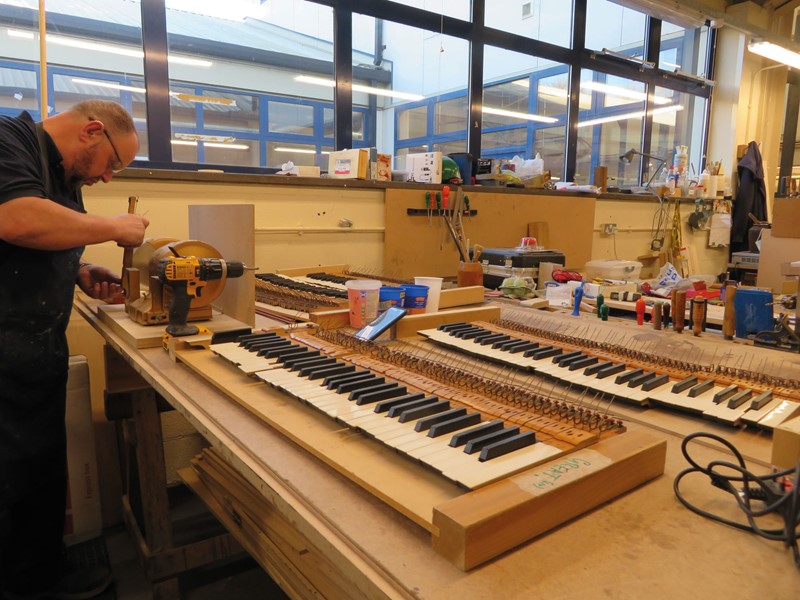
Geoff Pollard buffs the keys
The Swell department is a little more distant than the Great and Positive, though it does not lack impact. This must be an advantage for the accompanist and lends nuance and contrast to the overall effect of the organ; unlike some neo-Classical organs, and doubtless aided by the building, this instrument can emit mild sounds as if from another realm. The Sesquialtera is narrow-scaled but is not the bold Germanic principal version one might hope for. As for the Oboe da Caccia, is it the only such stop with that name? The Solo has, like the Swell, been moved slightly. It possesses a mixture of stops traditionally provided on such a department (for example the delicious Orchestral Flute, and the big strings) and others of softer character, which play a role in accompanying the choir. From the latter are drawn the Accompanimental Organ, a small division entirely derived from the Solo which can be played from the lowest keyboard. The enclosed, extended Tuba rank is a reminder that this organ was perhaps a shade more eclectic in concept than its cousin at Blackburn was. The Tubas have the effect of broadening as well as loudening the tutti. They do not dominate the ensemble. That job is left to the Orchestral Trumpet, which is startling.
The organ has had its challenges addressed thoroughly. Besides the small but telling revisions to the layout mentioned above, the struggling schwimmers have been replaced by single-rise reservoirs throughout. The console has been restored, its awkward roll-top being replaced by a fine set of doors. Owing to these sorts of changes, there are some who might deny this project the term ‘restoration’. Yet the retention of the tonal scheme, and the respect shown for the work of Dennis Thurlow and his colleagues, is both broad-minded and very welcome.
Delighted with the work carried out by Harrison & Harrison, Duffy also acknowledges the contribution of consultant Dr John Rowntree for his ‘meticulous attention and guidance in achieving a wonderful outcome’. Summing up the results, Duffy’s successor Richard Lea says: ‘It feels as though we are hearing the 1967 Walker in its full glory for the first time. The organ sounds now as it was intended to do, before architectural compromises had to be made in 1967’. Meanwhile, I would echo Terry Duffy’s ultimate assessment: ‘I adore it!’
Tom Bell is a performer, educator, and independent organ consultant. He lives in the north of England
This article originally appeared in the Spring 2024 issue of Choir & Organ magazine. Never miss an issue – subscribe today




